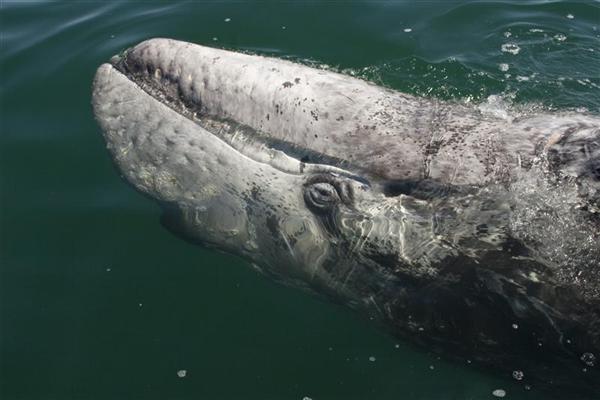Estimated North Pacific population: 26,000. Atlantic population extinct, western pacific population: threatened.
Ways to identify this species: gray skin with numerous light patches, head appears triangular from above, no dorsal fin.
Gray Whale Biology
- This coastal species undertakes the longest migration of any whale, traveling more than 4,000 miles from its summer feeding grounds in the Arctic to spend the winter in the warmer waters of the Pacific coast and Mexico.
- Grey whales are mainly bottom feeders that eat invertebrates and crustaceans from the mud and sand using their baleen. During migration or breeding, they usually do not eat, instead consuming enormous amounts of food during the summer.
Threats to Gray Whales
- The gray whale’s western North Pacific population was largely destroyed by commercial whaling and is estimated today to be at just 100 whales. Its North Atlantic population was completely eliminated by whaling.
- Collisions with marine vessels cause injury and death, as does entanglement in fishing gear. Pollution, coastal development, climate change and whale watching disturbances may also play a role in strandings—whales becoming stranded on beaches—which numbered 355 in 2000.

